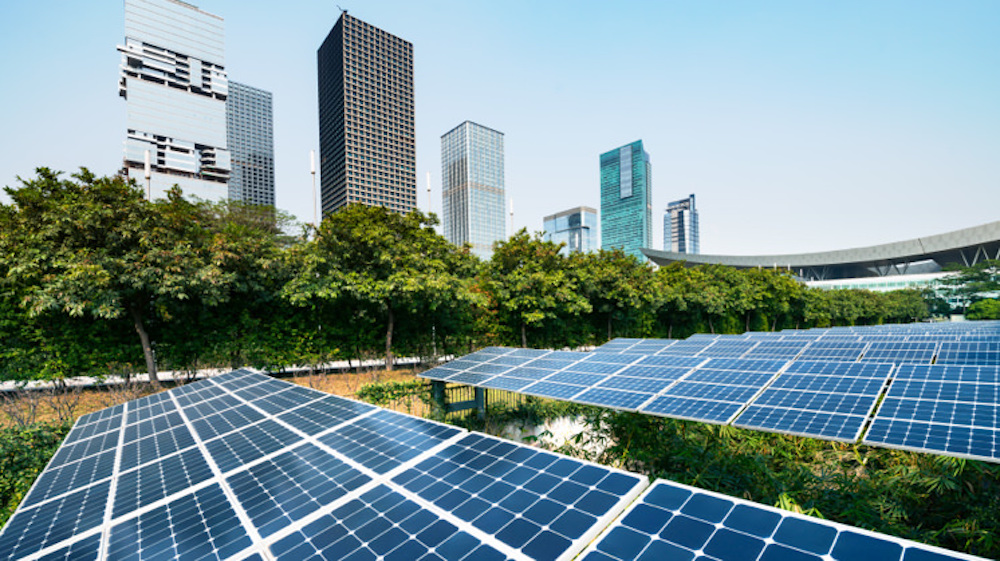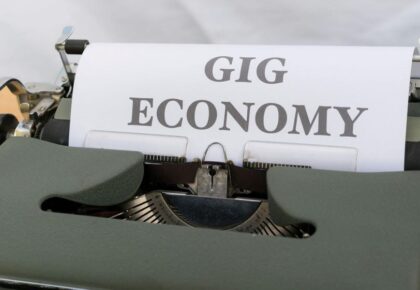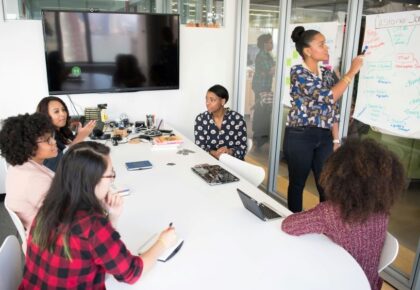
The 21st century has witnessed a burgeoning environmental consciousness, propelling the concept of “sustainable infrastructure” to the forefront of global discussions. From gleaming solar panels gracing rooftops to silent electric buses traversing city streets, these advancements paint a seemingly idyllic picture of a future powered by clean energy and responsible resource management. However, a closer examination reveals a critical disparity lurking beneath this facade – the emergence of a “green divide” that systematically excludes low-income communities from the benefits of sustainable infrastructure development.
This phenomenon transcends a mere lack of access to cutting-edge technology. It represents a complex interplay of economic, social, and political factors that disproportionately concentrate the advantages of sustainability initiatives in wealthier areas. While affluent neighborhoods boast gleaming solar panels and eco-friendly transportation networks, low-income communities often remain burdened with outdated, polluting infrastructure. This disparity not only undermines the overarching goal of environmental sustainability, but also exacerbates existing social inequalities.
The Disparity: Bypassing the Needy
Several factors contribute to the unequal distribution of sustainable infrastructure:
-
Market Forces and Profitability: Private companies spearheading renewable energy projects often prioritize areas with high return on investment. Densely populated, affluent neighborhoods with higher energy consumption offer a more lucrative market compared to low-income communities.
-
Land Availability and Zoning Restrictions: Siting renewable energy projects, like solar farms or wind turbines, requires available land. However, land in low-income communities might be scarce due to dense housing or zoning restrictions that favor industrial development over renewable energy infrastructure.
-
Community Engagement and Political Influence: Wealthier neighborhoods often have more resources and political clout to advocate for and participate in infrastructure projects. This can influence decision-making processes, leading to investments in areas with more vocal and engaged residents.
Consequences of the Green Divide: A Double Burden
The consequences of the green divide are far-reaching and exacerbate existing inequalities:
-
Energy Insecurity and High Energy Costs: Low-income communities often rely on outdated and inefficient energy infrastructure, leading to higher energy bills and unreliable access. This financial burden disproportionately impacts these communities, further hindering economic mobility.
-
Health Disparities: Fossil fuel-based energy infrastructure contributes to air and water pollution, leading to respiratory illnesses and other health issues. These impacts are often concentrated in low-income neighborhoods, where residents are more likely to live near polluting facilities or lack resources to mitigate health risks.
-
Limited Access to Green Jobs: The rise of the green economy presents opportunities for new jobs in renewable energy and sustainable technologies. However, the lack of access to training and education in these fields can exclude residents of low-income communities from participating in the green workforce.
Building Bridges: Solutions for Equitable Green Infrastructure
Bridging the green divide requires a multi-pronged approach involving policymakers, communities, and private companies:
-
Policy and Regulatory Frameworks: Governments can enact policies that incentivize or mandate the equitable distribution of sustainable infrastructure projects. These could include tax breaks for renewable energy projects in underserved areas or zoning regulations that prioritize sustainable development.
-
Community Engagement and Empowerment: Meaningful engagement with low-income communities is crucial. Community residents should be involved in the planning, implementation, and ownership of sustainable infrastructure projects. This fosters a sense of ownership and ensures projects address the specific needs of the community.
-
Financing Models for Equitable Access: Traditional financing models may not be suitable for low-income communities. Innovative financing solutions, such as microloans, community bonds, and public-private partnerships, are needed to ensure access to affordable sustainable infrastructure projects.
-
Investing in Workforce Development: Bridging the green divide requires upskilling and reskilling residents of low-income communities to participate in the green workforce. This includes educational programs focused on renewable energy technologies, energy efficiency, and green building practices.
Examples of Success: Lighting the Way Forward
Several initiatives offer hope for bridging the green divide:
-
Community Solar Programs: These programs allow residents to subscribe to a solar farm or rooftop solar installation without the upfront cost of ownership. This allows low-income communities to benefit from renewable energy without significant financial barriers.
-
Urban Green Infrastructure: Projects like green roofs, bioswales, and urban gardens can be implemented in existing buildings and public spaces in low-income neighborhoods. These initiatives provide environmental benefits like stormwater management, improved air quality, and reduced urban heat island effect, even in densely populated areas.
-
Energy Efficiency Retrofits: Upgrading low-income housing with energy-efficient appliances and insulation can significantly reduce energy bills, improving affordability and environmental sustainability. These programs can be coupled with financial assistance to make retrofits accessible for low-income residents.
A Sustainable Future for All
The green divide is a stark reminder that environmental progress can exacerbate existing social inequalities. By acknowledging this challenge and taking proactive steps towards equitable investments in sustainable infrastructure, we can ensure that the path to a greener future benefits all communities, not just the affluent. Building a truly sustainable future requires leaving no one behind. We must ensure that low-income communities have access to the clean energy, green spaces, and economic opportunities offered by sustainable infrastructure. Only then can we create a just and equitable future where environmental consciousness and social progress go hand-in-hand.
The Road Ahead: A Call to Action
Bridging the green divide requires a collective effort. Here’s how you can contribute:
-
Advocate for Policy Changes: Raise awareness of the green divide and advocate for policies that promote equitable distribution of sustainable infrastructure projects. Contact your local representatives and urge them to support policies that address this critical issue.
-
Support Community-Based Organizations: Organizations working on environmental justice and sustainable development in low-income communities deserve your support. Donate your time or resources to help empower these communities and amplify their voices.
-
Make Conscious Consumer Choices: Support companies committed to environmental and social responsibility. Look for businesses that prioritize renewable energy sources and invest in sustainable practices throughout their operations.
-
Demand Transparency and Accountability: Hold companies and institutions accountable for their environmental and social impact. Ask questions about their investment in renewable energy and their efforts to promote equitable access to sustainable infrastructure.
A Green Future We Can All Share
The concept of sustainable infrastructure should not be synonymous with privilege. By working together, demanding change, and supporting innovative solutions, we can bridge the green divide. This will create a future where clean energy, healthy environments, and economic opportunities are accessible to all, regardless of income or zip code. The path towards a truly sustainable future requires a commitment to leaving no community behind. Let’s rise to the challenge and build a greener future that benefits all.
Sustainable Infrastructure in Cities and Communities: A Booming Market with Vast Business Opportunities
The global focus on sustainable development has propelled the “Sustainable Infrastructure – Cities and Communities” market to become a major economic driver. This market encompasses a wide range of solutions aimed at creating environmentally friendly and resilient urban environments. Here’s a breakdown of the market size, potential growth areas, and business opportunities for companies of all sizes:
Market Size and Growth:
- Estimated Value: The market for sustainable infrastructure in cities and communities is estimated to reach a staggering USD 4.1 trillion by 2027, with a projected Compound Annual Growth Rate (CAGR) exceeding 10%.
- Growth Drivers: Several factors contribute to this remarkable growth:
- Rising Urbanization: The rapid growth of urban populations worldwide necessitates the development of sustainable infrastructure to meet the increasing demand for energy, water, transportation, and waste management.
- Climate Change Concerns: Growing awareness of climate change is driving investments in renewable energy sources, energy-efficient buildings, and climate-resilient infrastructure in cities.
- Government Regulations: Governments worldwide are implementing stricter regulations mandating sustainable practices in construction and infrastructure development, creating demand for innovative solutions.
- Technological Advancements: Continuous advancements in areas like smart grids, renewable energy technologies, and energy-efficient materials are fostering market growth.
Areas of Business Opportunity:
The “Sustainable Infrastructure – Cities and Communities” market encompasses a vast array of sub-sectors, presenting numerous business opportunities for companies with innovative solutions:
- Renewable Energy Integration: Developing and deploying solutions for integrating renewable energy sources like solar, wind, and geothermal energy into urban grids is a major opportunity area. This includes companies specializing in solar panels, wind turbines, smart grid technology, and energy storage solutions.
- Energy Efficiency and Retrofitting: Retrofitting existing buildings with energy-efficient materials, appliances, and technologies offers a vast market potential. Businesses specializing in insulation, smart HVAC systems, energy-efficient lighting solutions, and building management systems can capitalize on this trend.
- Green Building Practices: The construction sector is witnessing a surge in demand for sustainable building practices. Companies offering expertise in green building materials, energy-efficient building design, and sustainable construction techniques are well-positioned.
- Smart Cities Solutions: Developing and implementing smart city technologies like intelligent transportation systems, connected infrastructure, and data analytics platforms offer significant business opportunities. Companies specializing in sensors, data communication networks, and software solutions can play a crucial role.
- Sustainable Water Management: Developing solutions for efficient water management, including rainwater harvesting, wastewater treatment, and leak detection systems, presents a lucrative market segment. Companies with expertise in water filtration technologies, water meters, and smart irrigation systems are well-positioned.
- Waste Management and Recycling: Implementing sustainable waste management solutions like waste-to-energy plants, efficient recycling systems, and organic waste composting offers substantial business opportunities. Companies specializing in waste collection technologies, recycling facilities, and composting infrastructure can contribute significantly.
Regional Variations:
- Developed Markets: North America and Europe are expected to remain the dominant markets due to established infrastructure, stricter environmental regulations, and higher investment capacity.
- Emerging Markets: Asia Pacific is a rapidly growing market with significant government investments in sustainable infrastructure projects. This region presents immense opportunities for companies offering cost-effective and scalable solutions.
- Latin America and Africa: These regions offer significant potential for sustainable infrastructure development, particularly in areas like renewable energy integration and smart water management solutions.
Challenges and Considerations:
- High Initial Investment: Sustainable infrastructure projects can be expensive. Companies need to develop innovative financing models like public-private partnerships (PPPs) and green bonds to attract investors and make these projects financially viable.
- Technological Integration: Implementing complex smart city solutions and integrating various technologies requires robust planning, expertise, and seamless data sharing frameworks.
- Policy Uncertainties: Inconsistent policies and regulations across regions can hinder market growth. Companies need to stay updated on policy changes and adapt their strategies accordingly.
The “Sustainable Infrastructure – Cities and Communities” market presents a vast array of exciting business opportunities. By developing innovative solutions and collaborating with governments and communities, companies can play a crucial role in creating a more sustainable future for our cities and communities. This market presents a unique opportunity for businesses to achieve both social and economic benefits by addressing critical environmental challenges and fostering a more resilient and livable urban environment for generations to come.








